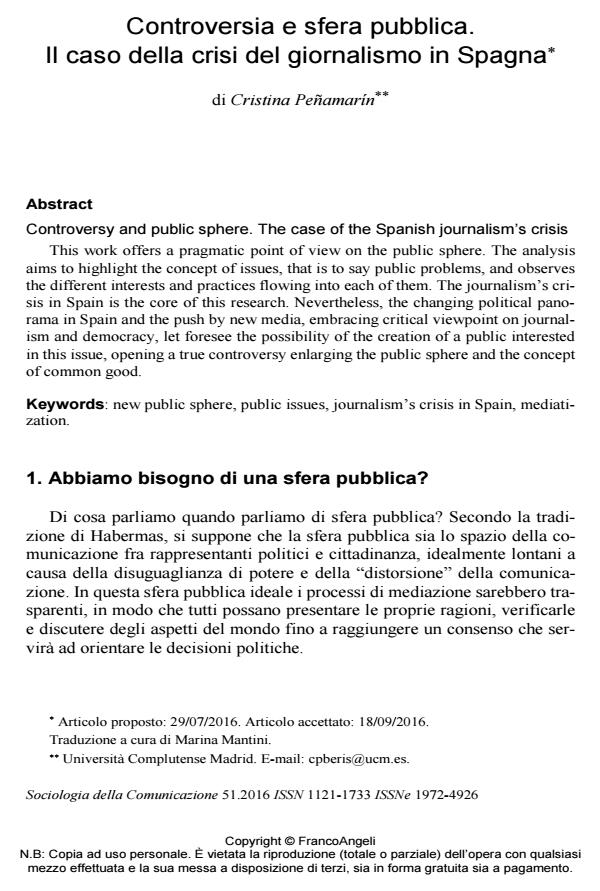Controversy and public sphere. The case of the Spanish journalism’s crisis
Journal title SOCIOLOGIA DELLA COMUNICAZIONE
Author/s Cristina Penamarin
Publishing Year 2016 Issue 2016/51
Language Italian Pages 21 P. 8-28 File size 209 KB
DOI 10.3280/SC2016-051002
DOI is like a bar code for intellectual property: to have more infomation
click here
Below, you can see the article first page
If you want to buy this article in PDF format, you can do it, following the instructions to buy download credits

FrancoAngeli is member of Publishers International Linking Association, Inc (PILA), a not-for-profit association which run the CrossRef service enabling links to and from online scholarly content.
This work offers a pragmatic point of view on the public sphere. The analysis aims to highlight the concept of issues, that is to say public problems, and observes the different interests and practices flowing into each of them. The journalism’s crisis in Spain is the core of this research. Nevertheless, the changing political panorama in Spain and the push by new media, embracing critical viewpoint on journalism and democracy, let foresee the possibility of the creation of a public interested in this issue, opening a true controversy enlarging the public sphere and the concept of common good.
Keywords: New public sphere, public issues, journalism’s crisis in Spain, mediatization.
Cristina Penamarin, Controversia e sfera pubblica. Il caso della crisi del giornalismo in Spagna in "SOCIOLOGIA DELLA COMUNICAZIONE " 51/2016, pp 8-28, DOI: 10.3280/SC2016-051002